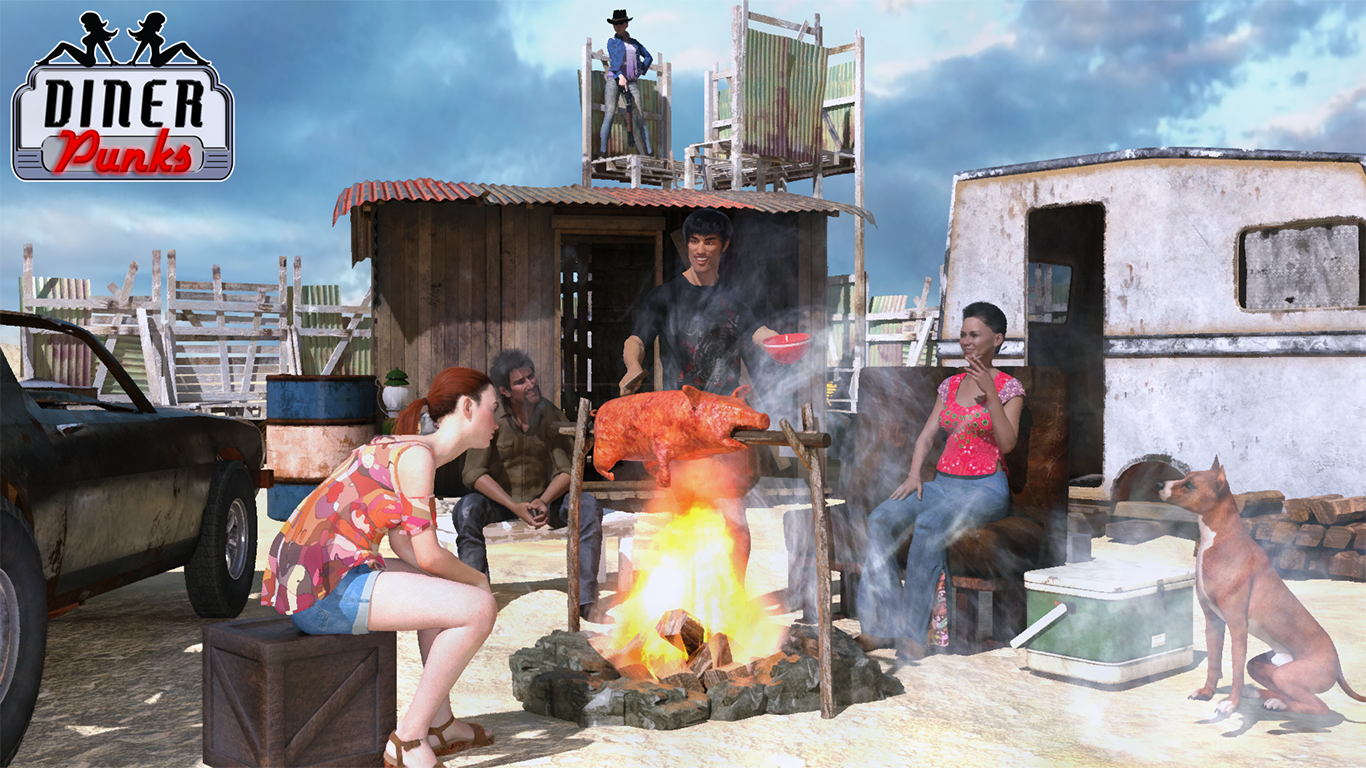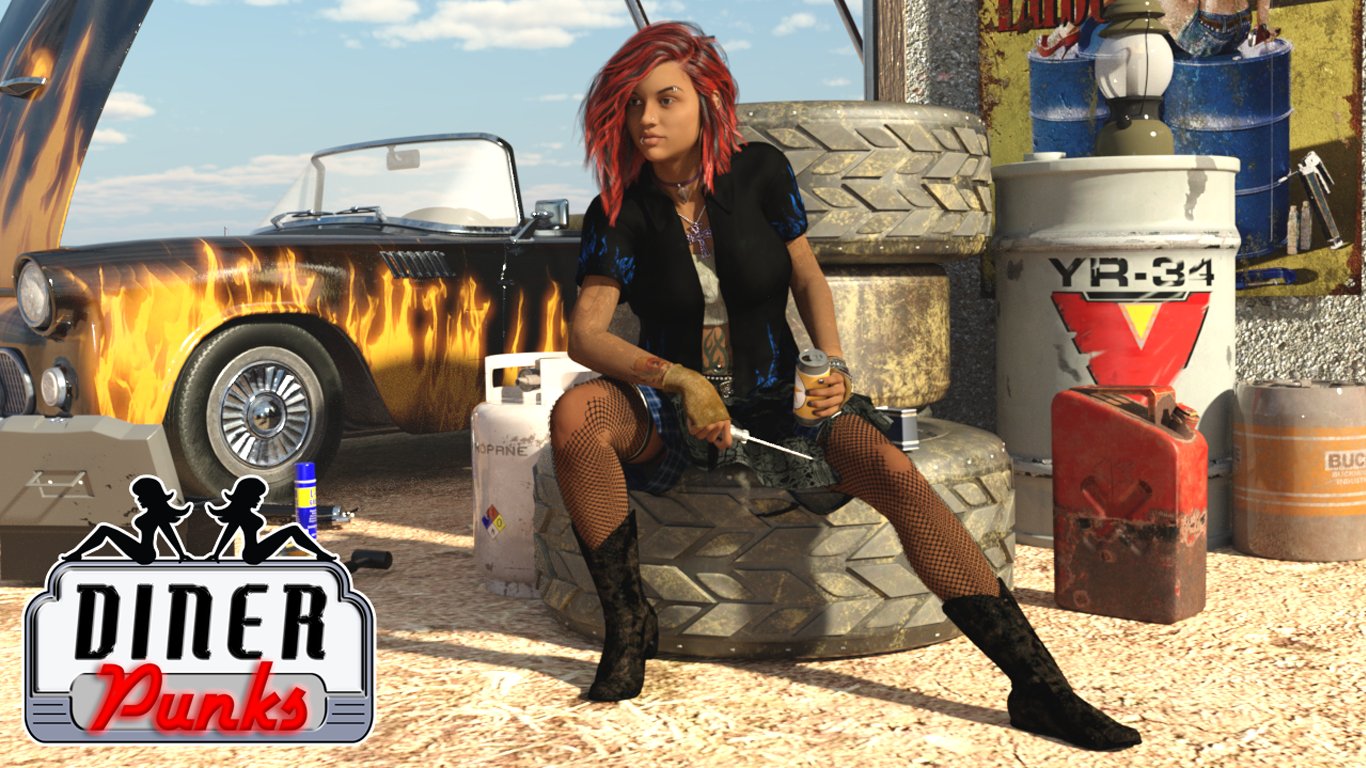We may earn money or products from the companies mentioned in this post.
I just wrote a 12-part series providing background for how we got from QAGS 1st Edition to QAGS 2nd Edition and why it’s taken us over 20 years to get around to QAGS 3E. Today, I’m going to go into detail about why I feel like QAGS needs a new edition. Some of the problems here are of our own creation, some are things we noticed relatively early and found workarounds for, and some are things that casual players might not even notice. One thing about running and playing the same game for 20+ years is that you start to notice every single flaw, and they don’t get any less annoying with time. So here, in no particular order, are the problems with QAGS 2E.
The Humor
Early on, the fact that QAGS was funny was one of our major selling points. Back then, there weren’t a lot of games that were funny to read, much less games that included “adult” humor (I think Hol was the only one that did both). It didn’t take long for the humor to become a problem. While there were a few grown-ass adults who got offended by the bad language, their opinion didn’t particularly matter to us. The problem came when we started realizing that QAGS was a really good introductory system for younger gamers, but we’d filled it with a lot of material that wasn’t suitable for younger gamers. Hell, even the name of the game has the word “Ass” in it. While the much-discussed “QAGS for Kids” never actually happened, we were able to sort of get around this problem by stripping out most of the jokes when we put together the Qik-Start Rules.
The humor got to be even more of a problem later on in what we can only classify as “it was a different time.” We wrote QAGS during the heyday of things like Maxim Magazine and The Man Show. Furthermore, we were guys in our mid-20s who’d recently spent 4 years at a small, political correctness obsessed, private college. As Leighton said somewhere, “we were rebelling against…something,” and we tried to do that by being edgy and intentionally offensive. Many of the jokes haven’t aged well, and some are downright embarrassing today.
How We’re Fixing It: While I’m not avoiding humor in the new edition, I’m currently not going out of my way to make things funny. When we wrote QAGS 1E, the jokes were filler to make the book long enough to sell. When we wrote QAGS 2E, we considered the jokes to be one of the major selling points. This time around, we’re focusing on writing a game system, not a funny book. There might be a run-through to punch up the text and make it more entertaining later, but if so we won’t be going for shock value. We’ll also keep the cursing and dick jokes to a minimum.
The Roll-Under System
When we wrote QAGS, the 2nd Edition Dungeons & Dragon non-weapon proficiency rules were the only place most people had encountered a roll-under system (at least with a d20–most percentile systems are technically roll-under). This created an immediate problem, since in that system a low roll is better (you want the difference between the roll and your attribute score to be as high as possible), so everyone assumed that was how QAGS work. It is not: the highest successful roll wins. Realizing that comparing rolling to The Price Is Right (“roll as high as you can without going over”) helped, but I’ve got a feeling that familiarity with The Price Is Right is slipping away as we become less and less of a monoculture.
Adding things like Difficulty Numbers (now you have to roll higher than the DN but lower than your score) and skills (which add to the number you’re rolling against, and therefore don’t make much of a difference due to the flat distribution) just made things more complicated. Adding the skill to the roll after determining success would have made a lot more sense, which is good because I’ve met a lot of people who just assumed that was how it worked even though we weren’t that smart when we made the rules (at this point I often use that rule, to the point that Josh had to remind me how it works in a recent game of Million-Colored Sun).
Even if you get past the failings of the roll-under system from a game design perspective, they’re still a huge pain in the ass when it comes to writing a game. It takes a lot of awkward phrasing to describe, it gets confusing whether +1 means a penalty or a bonus, and it just annoys the shit out of me every time I have to write a rules paragraph.
And don’t even get me started about how we set up Weakness rolls to work in reverse–so players actually want to fail the roll–which forced us to invent the phrase “if the Weakness takes effect” because “if the Weakness roll succeeds/fails” is unclear and confusing.
How We’re Fixing It: Every roll has a Difficulty Number and you want to roll as high as possible. Bonuses add, penalties subtract. The player always wants their rolls to succeed (we’re cutting out Weakness rolls entirely). Bigger is better, because this is America, motherfucker!
The Flat Distribution
When you’re rolling a single die, you have the exact same chance of rolling any number. For example, every single result on a d20 has a 5% chance of coming up. That doesn’t seem like a problem, since having a higher number increases the number of results that are considered successes–if you’re trying to roll 10 or less, you have a 50% chance of success compared to a 25% chance of succeeding on a 5 or less. Unfortunately, you’re only rolling one of those numbers, and it’s just as likely to be a 1 as a 10. The PC with the stat of 10 is more likely to succeed than the PC with a stat of 5, but their likelihood of rolling higher is entirely a function of what the other person rolled.
When rolling multiple dice, the probability of any given result depends on the number of combinations that can generate that result. If you’re rolling 2d6, there’s only 1 combination of rolls that will give you a 2 or a 12, but there are 3 combinations (1+6, 2+5, and 3+4) that will give you a 7. If Gygax had used a d20 instead of 3d6 for D&D stats, there would be a lot of characters walking around with a 20 Strength, 1 Intelligence, and 7 Wisdom. Using 3d6 creates a nice bell curve that typically generates numbers somewhere in the middle, with only occasional outliers on the extreme ends.
How We’re Fixing It: The fix for this one might be the biggest departure from the first two editions of QAGS. Instead of making d20 do all the work, we’re retooling the core rolling mechanic. Instead of a single d20, you’ll now roll at least two dice (Hero Factor and Attribute) and if your Calling/Job doesn’t apply, you’ll add a third die (Luck) to the roll. While this doesn’t always result in an evenly distributed bell curve, it does generate some kind of curve, which means that the rolls will group more toward the average of the dice being rolled. In addition to succeeding more often, characters with larger dice will generally roll better because their rolls will group toward their higher average. There’s still enough swing for the occasional outlier, but a lot less swing than the “roll a d20” mechanic of Q2E.
The Useless Number Range For Effects
In QAGS, the difference between the winning roll and the losing roll is called the Success Degree. We use that number to determine damage in combat (which makes the combat system a bit too deadly for most games), but that’s about it. The number range is simply too large to translate easily into other game mechanics, especially when the losing roll fails and is treated as a zero. We patched this problem in a few supplements by dividing the success degree by 4 or 5 to determine a modifier or something, but division always makes things seem more complicated.
How We’re Fixing It: This is one of the things I took directly from Million-Colored Sun. We included a rule there that if you were attacking Rabble (cannon fodder enemies), you get to kill an extra mook for every 5 points of your success degree. In Q3E, we’re not using the full success degree. Instead, you get 1 FX for every 5 points by which you beat the target number. If your opponent rolls a 5 and you roll an 8, you succeed with no FX. If you roll an 11, you get 1 FX. Rolling a 20 would give you 3 FX. FX can be thought of sort of like temporary Yum Yums–they let you make the action that you rolled for cooler or more effective in some ways. For example, spending an FX on a combat roll will allow you to roll an additional damage die. Even though we’re effectively still dividing the difference of the rolls by 4, stating it as “1 FX for every 5 points above the target number” makes it seem less complicated somehow. It allows for a version of giving the player power-ups for successes, which is the main thing I liked about the dice pool versions of Cinemechanix (for those of you who have followed the various versions of that system, FX work a lot like Fu).
The Overlapping Traits
Since Body/Brain/Nerve, Job, Gimmick, and (to a lesser extent) Weakness are all stats built for characters to roll against, deciding which stat to roll against can get confusing when there’s overlap. Even worse, sometimes using the stat that’s more mechanically appropriate can actually put the character at a disadvantage. While this allowed us to include a joke about an obscure late 80s Fox show starring Matthew Perry, it wasn’t very good game design.
How We’re Fixing It: Instead of having multiple traits that you might need to roll against, the new system is set up so each ability adds a component to the roll. Every roll includes Hero Factor and either Body, Brain, or Nerve. If your Calling is applicable, you add its bonus to the roll. If it’s not, you add your Luck Die to the roll. Gimmicks and Weaknesses give you Advantage (roll Hero Die twice and take the best) or Disadvantage (roll Hero Die twice and take the worst). Each trait plays its own part in the roll with no overlap.
Broken Gimmicks and Weaknesses
Another problem with Gimmicks and Weaknesses besides overlap was that they didn’t really work for “always on” powers like invulnerability unless you gave the character a Gimmick Number (and therefore a Weakness Number) of 20. Technically even then the power could still malfunction, since a natural 20 always fails. This got even more confusing when you tried to use Gimmick and Weakness to represent multiple powers; A vampire has a score of “20” in not casting a reflection, but its ability to mesmerize people doesn’t work every time like it’s Colt 45.
How We’re Fixing It: As already mentioned, Gimmicks and Weaknesses now give characters an advantage or disadvantage on rolls where their Gimmick Helps or Hinders them. For some groups, this will do it. If your Gimmick/Weakness is “Dwarf,” you get to roll with advantage when you’re doing dwarfy stuff and have to roll with a disadvantage when engaging in undwarfsmanslike activities.
For situations where the advantage/disadvantage doesn’t quite do the trick, we’ve also introduced Hooks & Hacks, which are basically whatever extra rules you need to make things work. Hooks & Hacks often come attached with other traits, especially Gimmick and Weakness. So if your group isn’t content with giving a dwarf an advantage or disadvantage based on the GM’s estimation of the “dwarfiness” of a situation, you could use Hooks & Hacks to define these powers in more detail. Rolling with advantage works for an Elf’s heightened senses, superior archery and swordsmanship, and resistance to certain types of magic, but they would also have a hook that describes how their darkvision works since it’s an “always on” power that the player isn’t likely to roll for.
Over-reliance on Yum Yums
The great thing about Yum Yums was that we could use them to rationalize any hole in the system. If there was a problem, you could fix it by applying Yum Yums. This was our rationalization for why the deadly combat system wasn’t really a flaw for years. If combat was too deadly, it meant the GM wasn’t handing out enough Yum Yums (or that the players weren’t using their Yum Yums, which is more common than you may think). Unfortunately, handing out enough Yum Yums to deal with certain rules problems inevitably led to characters having way more Yum Yums than they should in scenes where those problematic rules weren’t relevant.
How We’re Fixing It: Yum Yums are still around, but we’re downsizing their role a bit so that they’re something that they’re more integrated with the system and not just a a sloppy way to plaster over holes in the existing rules.





